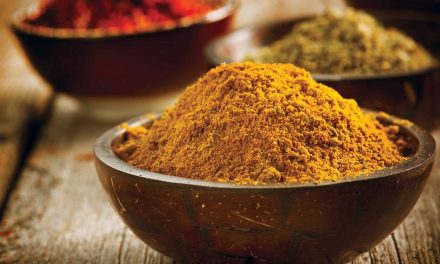Mindfulness meditation reduces reported pain significantly more than does placebo, say US investigators, who found that different neural mechanisms are employed by different pain relief interventions.
The study of healthy volunteers revealed that although a placebo cream and sham mindfulness meditation significantly reduced experienced pain in response to a thermal stimulus, mindfulness meditation achieved pain reductions significantly greater than both.
[wp_ad_camp_1]
The findings also showed that the neural mechanisms employed to reduce pain were different for mindfulness meditation and placebo, indicating that there are multiple pathways for pain modulation.
“When compared to the placebo conditions, mindfulness meditation–based pain relief engages multiple mechanisms that are associated with cognitive control, emotion regulation, and reducing the activation of low-level sensory processes,” lead investigator Fadel Zeidan, PhD, assistant professor of neurobiology and anatomy at Wake Forest Baptist Medical Center, Winston-Salem, North Carolina, told Medscape Medical News.
“The findings also show us that mindfulness employs a unique subset of brain regions when compared to the placebo conditions. In a nutshell, these findings provide more evidence that mindfulness meditation is not a pseudo-type of cognitive intervention.”
The research was published November 18 in the Journal of Neuroscience.
Durable Effect?
The team conducted a series of experiments in which 75 healthy volunteers (mean age, 27 years) were randomly assigned to 4 days of either mindfulness meditation, placebo conditioning, sham mindfulness meditation, or a book-listening control intervention to determine the impact of these interventions on pain.
The participants initially completed the Freiburg Mindfulness Inventory short form (FMI), after which they underwent psychophysical training in which they were familiarized with the delivery of thermal stimuli of 35º to 49º C for 5 seconds to the left arm via the TSA-II NeuroSensory Analyzer (Medoc, Ramat Yishai, Israel). They were also assessed through use of a visual analogue pain rating scale.
Participants then underwent MRI of the brain while experiencing either neutral or painful thermal stimuli to the right calf. This was followed by group training/conditioning to one of the interventions.
Mindfulness meditation training was administered as one 20-minute session per day for 4 days. Sham meditation consisted of telling participants to close their eyes and take deep breaths.
For the placebo, participants were told they were taking part in a trial for a “topical, local anesthetic” (petroleum jelly). The control group listened to recordings of a book previously validated as a neutral comparison regime.
Again under MRI, participants experienced neutral and painful thermal stimuli either side of a manipulation session, in which the sham and actual mindfulness groups were asked to begin meditating, the placebo group received a topical application of the cream, and the control group was told to keep their eyes closed and not move.
The findings revealed that all groups reported significiant changes in pain intensity before and after the manipulation session in response to painful thermal stimuli (P = .002). This consisted of significant reductions in pain intensity following mindfulness meditation, sham mindfulness, and placebo, and a significant increase in pain intensity following the control intervention.
Further analysis indicated that mindfulness mediation was associated with significantly greater reductions in pain intensity and pain unpleasantness vs placebo (P = .032 and P < .001, respectively).
Significant reductions in pain intensity and pain unpleasantness were also seen with mindfulness meditation in comparison with sham meditation (P = .030 and P = .043, respectively) and with the control intervention (P < .05 for both).
Interestingly, MRI revealed that pain relief following mindfulness meditation was associated with increased activation in brain regions linked to the cognitive modulation of pain, such as the orbitofrontal, subgenual anterior cingulate, and anterior insulate cortex.
In contrast, placebo analgesia was linked to activation of the dorsolateral prefrontal cortex and deactivation of the secondary somatosensory cortex, which is linked to sensory processing.
Sham meditation was associated with reductions in respiratory rate vs other interventions but not with significant changes in neural activity.
Discussing the findings, Dr Zeidan said that it is unclear how long the pain relief effect of mindfulness could be expected to last.
“It’s really hard to say, and the answer is probably not long. Having said that, in a previous paper, we found that after a 3-day meditation intervention, subjects felt less pain when compared to a control group, even when they were not meditating,” he said.
“However, in the present study, pain relief was produced during meditation. More data are needed to see if the pain-relieving effect of meditation is produced even when not meditating and how much training is required. I would imagine that that may take more training.”
The place of mindfulness meditation in clinical pain management is also open to debate.
“At this stage, I don’t see mindfulness meditation replacing traditional pain therapies,” Dr Zeidan said. “However, I do see mindfulness-based therapies as an adjunct tool that can be used in conjunction with other therapies/treatments to reduce medical costs and pharmacologic intervention.”
One of the interesting aspects of the study findings was that sham mindfulness also yielded beneficial effects on pain. Does Dr Zeidan believe that there are aspects of sham meditation that could help to optimize mindfulness for pain management?
“Absolutely! Simply thinking that you were meditating and taking deep breaths produced significant reductions in pain. This is a critical consideration for the development of meditation interventions to specifically target health outcomes.
“Having said that, more research is needed with the sham meditation technique, but we found that there are analgesic mechanisms associated with lowering respiration rate and employing a meditative posture,” he said.
Pain Mechanisms Complex
Commenting on the findings for Medscape Medical News, Madhav Goyal, MD, MPH, from Johns Hopkins University School of Medicine, Baltimore, Maryland, described the research as “interesting.”
“While they do find that certain regions of the brain are either activated or deactivated more with mindfulness compared with one of the control groups, the issue of what is the mechanism by which we feel less pain is a complex one.
“It is interesting that certain regions of the brain are activated or deactivated in each of the different groups that showed some improvement, suggesting that analgesia works through various mechanisms,” he said.
Dr Goyal noted, however, that the study has “some limitations.”
“Very few people would consider three 20-minute sessions of mindfulness as real training in mindfulness.”
Moreover, he questioned the use of the term “placebo” as a catch-all word, and wondered whether the nature of the placebo used could have had an impact on the findings.
” ‘Placebo’ is a generic term for many different ways to trick the brain into thinking it is getting something externally which it actually isn’t,” he explained, adding: “Different types of placebo can have differing responses: an expensive bitter pill is likely to have a greater analgesic effect than a free sugar pill.”
Dr Goyal questioned whether the results would have been different if “the investigators had also given a placebo pill instead of the cream that was said to reduce pain.”
There are also other comparisons that could have shed light on the utility of mindfulness in pain management.
“It would have been very interesting to see how their findings compare with treatments that are known to reduce pain, such as Tylenol [acetaminophen] or ibuprofen, or even a narcotic,” he said. “How do mindfulness and the placebo conditions compare with those mechanisms?”
Finally, Dr Goyal pointed out that “the paper seems to imply that the mindfulness group was the most mindful, based on their use of the FMI.
“But all the groups had a similar level of mindfulness on that scale, so that can’t be the explanation,” he said. “This doesn’t detract from the findings, though.”
This work was supported by the National Center for Complementary and Integrative Health; the National Institute of Neurological Disorders and Stroke; the Mind and Life Institute Francisco J. Varela Award; and the Wake Forest Center for Integrative Medicine.
Source: medscape.com













